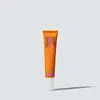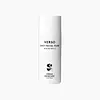What's inside
What's inside
 Key Ingredients
Key Ingredients

 Benefits
Benefits

 Concerns
Concerns

 Ingredients Side-by-side
Ingredients Side-by-side

Water
Skin ConditioningOctocrylene
UV AbsorberSorbitol
HumectantEthylhexyl Salicylate
UV AbsorberButyl Methoxydibenzoylmethane
UV AbsorberPhenylbenzimidazole Sulfonic Acid
UV AbsorberGlyceryl Oleate Citrate
EmulsifyingNiacinamide
SmoothingEthyl Oleate
EmollientCaprylyl Methicone
Skin ConditioningSilica
AbrasivePropanediol
SolventArginine
MaskingHomosalate
Skin ConditioningCetyl Alcohol
EmollientAscorbyl Palmitate
AntioxidantGlyceryl Stearate
EmollientPEG-100 Stearate
Dicaprylyl Carbonate
EmollientLinoleic Acid
CleansingOleic Acid
EmollientHydroxyacetophenone
AntioxidantCaprylic/Capric Triglyceride
MaskingAcrylates/C10-30 Alkyl Acrylate Crosspolymer
Emulsion StabilisingXanthan Gum
EmulsifyingCaffeine
Skin ConditioningBisabolol
Masking1,2-Hexanediol
Skin ConditioningCaprylyl Glycol
EmollientCarnosine
Skin ConditioningHyaluronic Acid
HumectantSodium Gluconate
Skin ConditioningCitric Acid
BufferingTocopherol
AntioxidantPunica Granatum Seed Oil
EmollientGlyceryl Caprylate
EmollientDecyl Glucoside
CleansingLauryl Glucoside
CleansingCetearyl Olivate
Sorbitan Olivate
EmulsifyingGlyceryl Undecylenate
EmollientBentonite
AbsorbentSodium Benzoate
MaskingTocopheryl Acetate
AntioxidantMica
Cosmetic ColorantSodium Metabisulfite
AntioxidantCI 77163
Cosmetic ColorantAlgin
MaskingPotassium Sorbate
PreservativeSodium Lauroyl Lactylate
EmulsifyingResveratrol
AntioxidantCI 77491
Cosmetic ColorantCI 77492
Cosmetic ColorantCI 77499
Cosmetic ColorantCalcium Citrate
BufferingWater, Octocrylene, Sorbitol, Ethylhexyl Salicylate, Butyl Methoxydibenzoylmethane, Phenylbenzimidazole Sulfonic Acid, Glyceryl Oleate Citrate, Niacinamide, Ethyl Oleate, Caprylyl Methicone, Silica, Propanediol, Arginine, Homosalate, Cetyl Alcohol, Ascorbyl Palmitate, Glyceryl Stearate, PEG-100 Stearate, Dicaprylyl Carbonate, Linoleic Acid, Oleic Acid, Hydroxyacetophenone, Caprylic/Capric Triglyceride, Acrylates/C10-30 Alkyl Acrylate Crosspolymer, Xanthan Gum, Caffeine, Bisabolol, 1,2-Hexanediol, Caprylyl Glycol, Carnosine, Hyaluronic Acid, Sodium Gluconate, Citric Acid, Tocopherol, Punica Granatum Seed Oil, Glyceryl Caprylate, Decyl Glucoside, Lauryl Glucoside, Cetearyl Olivate, Sorbitan Olivate, Glyceryl Undecylenate, Bentonite, Sodium Benzoate, Tocopheryl Acetate, Mica, Sodium Metabisulfite, CI 77163, Algin, Potassium Sorbate, Sodium Lauroyl Lactylate, Resveratrol, CI 77491, CI 77492, CI 77499, Calcium Citrate
Water
Skin ConditioningNiacinamide
SmoothingButylene Glycol
HumectantDiethylhexyl Carbonate
EmollientHeptyl Undecylenate
EmollientButyrospermum Parkii Butter
Skin ConditioningRetinyl Retinoate
Skin ConditioningCurcuma Longa Root Extract
MaskingTetrahydrodiferuloylmethane
AntioxidantTetrahydropiperine
Skin ConditioningSodium Hyaluronate
HumectantCanola Oil
EmollientGlycerin
HumectantAmmonium Acryloyldimethyltaurate/Vp Copolymer
Dimethicone/Vinyl Dimethicone Crosspolymer
Skin ConditioningTocopheryl Acetate
AntioxidantCaprylyl Glycol
EmollientXanthan Gum
EmulsifyingSilica
AbrasivePhenoxyethanol
PreservativeParfum
MaskingWater, Niacinamide, Butylene Glycol, Diethylhexyl Carbonate, Heptyl Undecylenate, Butyrospermum Parkii Butter, Retinyl Retinoate, Curcuma Longa Root Extract, Tetrahydrodiferuloylmethane, Tetrahydropiperine, Sodium Hyaluronate, Canola Oil, Glycerin, Ammonium Acryloyldimethyltaurate/Vp Copolymer, Dimethicone/Vinyl Dimethicone Crosspolymer, Tocopheryl Acetate, Caprylyl Glycol, Xanthan Gum, Silica, Phenoxyethanol, Parfum
Ingredients Explained
These ingredients are found in both products.
Ingredients higher up in an ingredient list are typically present in a larger amount.
Caprylyl Glycol is a humectant and emollient, meaning it attracts and preserves moisture.
It is a common ingredient in many products, especially those designed to hydrate skin. The primary benefits are retaining moisture, skin softening, and promoting a healthy skin barrier.
Though Caprylyl Glycol is an alcohol derived from fatty acids, it is not the kind that can dry out skin.
This ingredient is also used as a preservative to extend the life of products. It has slight antimicrobial properties.
Learn more about Caprylyl GlycolNiacinamide is a multitasking form of vitamin B3 that strengthens the skin barrier, reduces pores and dark spots, regulates oil, and improves signs of aging.
And the best part? It's gentle and well-tolerated by most skin types, including sensitive and reactive skin.
You might have heard of "niacin flush", or the reddening of skin that causes itchiness. Niacinamide has not been found to cause this.
In very rare cases, some individuals may not be able to tolerate niacinamide at all or experience an allergic reaction to it.
If you are experiencing flaking, irritation, and dryness with this ingredient, be sure to double check all your products as this ingredient can be found in all categories of skincare.
When incorporating niacinamide into your routine, look out for concentration amounts. Typically, 5% niacinamide provides benefits such as fading dark spots. However, if you have sensitive skin, it is better to begin with a smaller concentration.
When you apply niacinamide to your skin, your body converts it into nicotinamide adenine dinucleotide (NAD). NAD is an essential coenzyme that is already found in your cells as "fuel" and powers countless biological processes.
In your skin, NAD helps repair cell damage, produce new healthy cells, support collagen production, strengthen the skin barrier, and fight environmental stressors (like UV and pollution).
Our natural NAD levels start to decline with age, leading to slower skin repair, visible aging, and a weaker skin barrier. By providing your skin niacinamide, you're recharging your skin's NAD levels. This leads to stronger, healthier, and younger looking skin.
Another name for vitamin B3 is nicotinamide. This vitamin is water-soluble and our bodies don't store it. We obtain Vitamin B3 from either food or skincare. Meat, fish, wheat, yeast, and leafy greens contain vitamin B3.
The type of niacinamide used in skincare is synthetically created.
Learn more about NiacinamideSilica, also known as silicon dioxide, is a naturally occurring mineral. It is used as a fine, spherical, and porous powder in cosmetics.
Though it has exfoliant properties, the function of silica varies depending on the product.
The unique structure of silica enhances the spreadability and adds smoothness, making it a great texture enhancer.
It is also used as an active carrier, emulsifier, and mattifier due to its ability to absorb excess oil.
In some products, tiny microneedles called spicules are made from silica or hydrolyzed sponge. When you rub them in, they lightly polish away dead skin layers and enhance the penetration of active ingredients.
Learn more about SilicaTocopheryl Acetate is AKA Vitamin E. It is an antioxidant and protects your skin from free radicals. Free radicals damage the skin by breaking down collagen.
One study found using Tocopheryl Acetate with Vitamin C decreased the number of sunburned cells.
Tocopheryl Acetate is commonly found in both skincare and dietary supplements.
Learn more about Tocopheryl AcetateWater. It's the most common cosmetic ingredient of all. You'll usually see it at the top of ingredient lists, meaning that it makes up the largest part of the product.
So why is it so popular? Water most often acts as a solvent - this means that it helps dissolve other ingredients into the formulation.
You'll also recognize water as that liquid we all need to stay alive. If you see this, drink a glass of water. Stay hydrated!
Learn more about WaterXanthan gum is used as a stabilizer and thickener within cosmetic products. It helps give products a sticky, thick feeling - preventing them from being too runny.
On the technical side of things, xanthan gum is a polysaccharide - a combination consisting of multiple sugar molecules bonded together.
Xanthan gum is a pretty common and great ingredient. It is a natural, non-toxic, non-irritating ingredient that is also commonly used in food products.
Learn more about Xanthan Gum